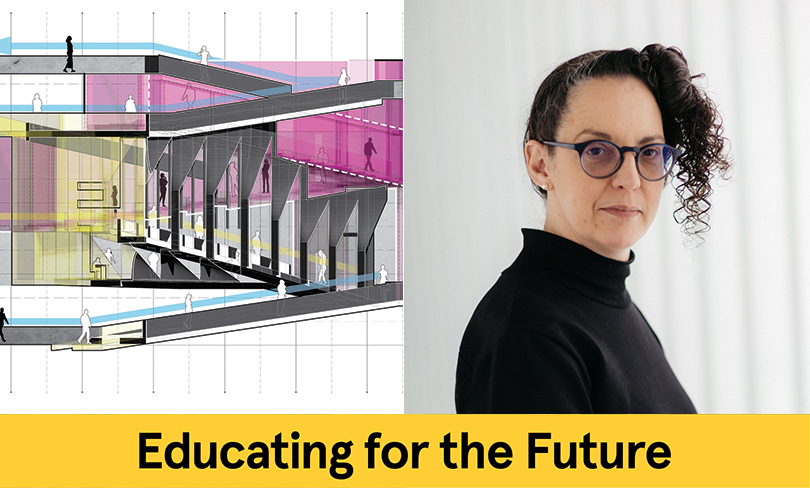
Exploring new models for education is one of the pillars of President Frances Bronet’s inauguration and an important area of discussion in academia. We live during a time of dramatic change, where the landscape is quickly shifting. How is Pratt preparing its students for careers and technologies that aren’t here yet?
In this new weekly series, “Educating for the Future,” educators across Pratt’s disciplines share their vision as to how they are educating students for a world that is quickly evolving—and reflect on what is needed to prepare the next generation for an environment that is rapidly changing.
This column is by Erika Hinrichs, Chair of Undergraduate Architecture in Pratt’s School of Architecture.
The architecture profession is one that is evolving quickly; embracing advances in fabrication, robotics, and material practice while pursuing specialized collaborations, for example. The manner of making is evolving with it and without question, education must be a leading partner in this process for the better.
Our vision is embodied in the diversity of our faculty. Made of practitioners, theorists, historians, material researchers, digital and technological experts, and designers—all are educators with a unique world view who share both a commitment to excellence and to the ethical exercise of leadership.
The undergraduate architecture program is a five-year, fully accredited, first professional degree program that prioritizes professional skills together with inventive design and critical thinking. We are a program that aspires to creative and intellectual independence and authentically motivated research where we value the voice of the individual student author, the inventive questions being asked, and the solutions development over five years, and integrate our curriculum with every aspect of our faculty’s expertise. The curriculum itself is a living and evolving structure, always seeking for ways to harness the synergies generated between teacher, student, and intellectual challenge. Our program prepares students to thrive in the environment of an evolving profession.
I think it is critical that our students engage more easily the complexities of the educational experience itself by testing and applying the lessons of the classroom within the design studio. The studio will always be the place where we ask questions, investigate and test possibilities, evaluate ourselves critically, and invent the futures solutions.
Find all of the “Educating for the Future” features and learn more about how Pratt’s educators from across the Institute are addressing what the future of education will bring to their field.